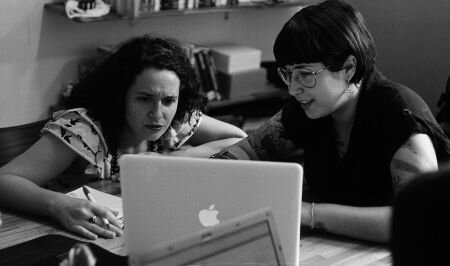Reportagem Pública
Civic journalism through crowd funding and open editorial participation
What is it?
The project produced a series of twelve investigative journalism reports for both television and print about contemporary Brazilian society. Reports focus on social, economic and political issues including human rights violations, police abuse, public services, corruption and the environment. The stories are published on a special website. The project is crowd-funded and an editorial board formed by the crowd-funders chose the subjects of the investigative pieces.
To produce great investigative reportages driven by public interest

A Pública, a non-profit Brazilian journalism agency founded in 2011 by professional journalists Marina Amaral and Natalia Viana, initiated the project. The self-stated mission of A Pública is "to produce great investigative reportages driven by public interest (...) strengthening the right to information, qualifying democratic debate and promoting human rights."
A Pública encourages readers and other media "to steal their stories" and re-publish them, lightly edited if necessary. In case of substantial editing or shortening, the "thieves" are asked to communicate about their plans via email. All stories are distributed with a Creative Commons licence by-nd.

How does it work?
Unlike traditional journalism, the funding as well as the editorial process at journalism agency A Pública, is collective and characterized by open participation and crowd-funding. Independent journalists present their story ideas according to an intricate system of rules and procedures and produce the stories.
As a first step, Reportagem Pública was registered as a crowd funded project at Catarse, the largest Brazilian crowd-funding community. The project was open for online contributions during a two-month period, from August to September 2013. Contributions could vary from $20 to R$ 2,000 Brazilian reais (approximately US$8.70 to $870). A Publica’s goal was to raise R$47,500,00 (or $20,652), but instead it raised R$58,935 ($25,623) from 808 individual donations. As previously promised, Omidyar Foundation then doubled the amount raised via Catarse.

After collecting the funds, A Pública organized an open call for story ideas inviting journalists to submit proposals for investigative reports within the project’s five main themes: human rights, police abuse, public services, corruption and the environment. Proposals for print publications, radio, or television had to be accompanied by a budget and could not exceed R$6,000,00 each ($2,608). A Pública's staff then selected story ideas from the open call and published a shortlist of 48 investigative reportage proposals online.

By contributing to the project, donors obtained the right to join the Editorial Board, which voted for 12 final projects to be executed with the money raised. Originally, the idea had been to elect ten story proposals, but this number was increased to twelve after fundraising exceeded expectations. Chosen story proposals include investigations about water control in Brazil, construction of a hydroelectric dam in Belo Monte, abortion, and the Brazilian penitentiary system. During the process, Publica communicated extensively with backers and used online tools for information dissemination and social mobilization.
What is the impact?
The collaborative thinking animating the project led to its intimate connection to a series of political demonstrations in the spring of 2013 in Brazil. "Reportagem Pública" became intrinsically linked to the agenda of the demonstrations, which expressed concerns about the state of Brazil’s public services, corruption, social inequality and so on.
The project makes it evident that a crowd-funding apparatus combined with editorial decision sharing can result in modern reportage practices, reconnecting journalism with civil society. This is even more crucial in moments of intense social conflict, when societies need journalism as a tool for understanding themselves.
Why did we select it?
Reportagem Pública creates new bonds between the producers of news and the public, fostering civil society engagement and strengthening the public sphere. Introducing principles of procedural democracy and participation in the journalism cycle, the project provides a new approach to journalistic research, producing high quality investigave journalism reports and promoting public debate.
To connect a greater network of producers to its potential audience
Reportagem Pública's network philosophy reveals itself in a collaborative logic that combines a crowd-funding model with open editorial engagement. Those who help to fund and build it drive the project’s final shape, scope and objectives in ways that deepen mutual commitment.

It's hard to exaggerate A Pública's importance within the Brazilian political context or to dismiss the dynamic energy of its ongoing experiments in open participation and networked journalism. During the 2014 presidential campaigns, annoyed by the superficiality of public debate and control of media corporations by political interests, A Pública created a news site styled after the hugely popular card game Truco, which forces politicians to confront and respond to facts and promises or be shamed publicly.
It also started a one issue website dealing exclusively with human rights. By acting as an agency, A Pública is helping to connect a greater network of producers to its potential audience, widening these circles of relation in a concentric expansion and building on new technological resources.